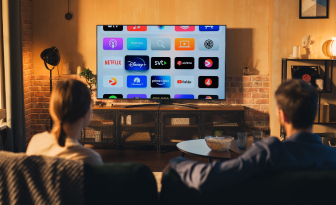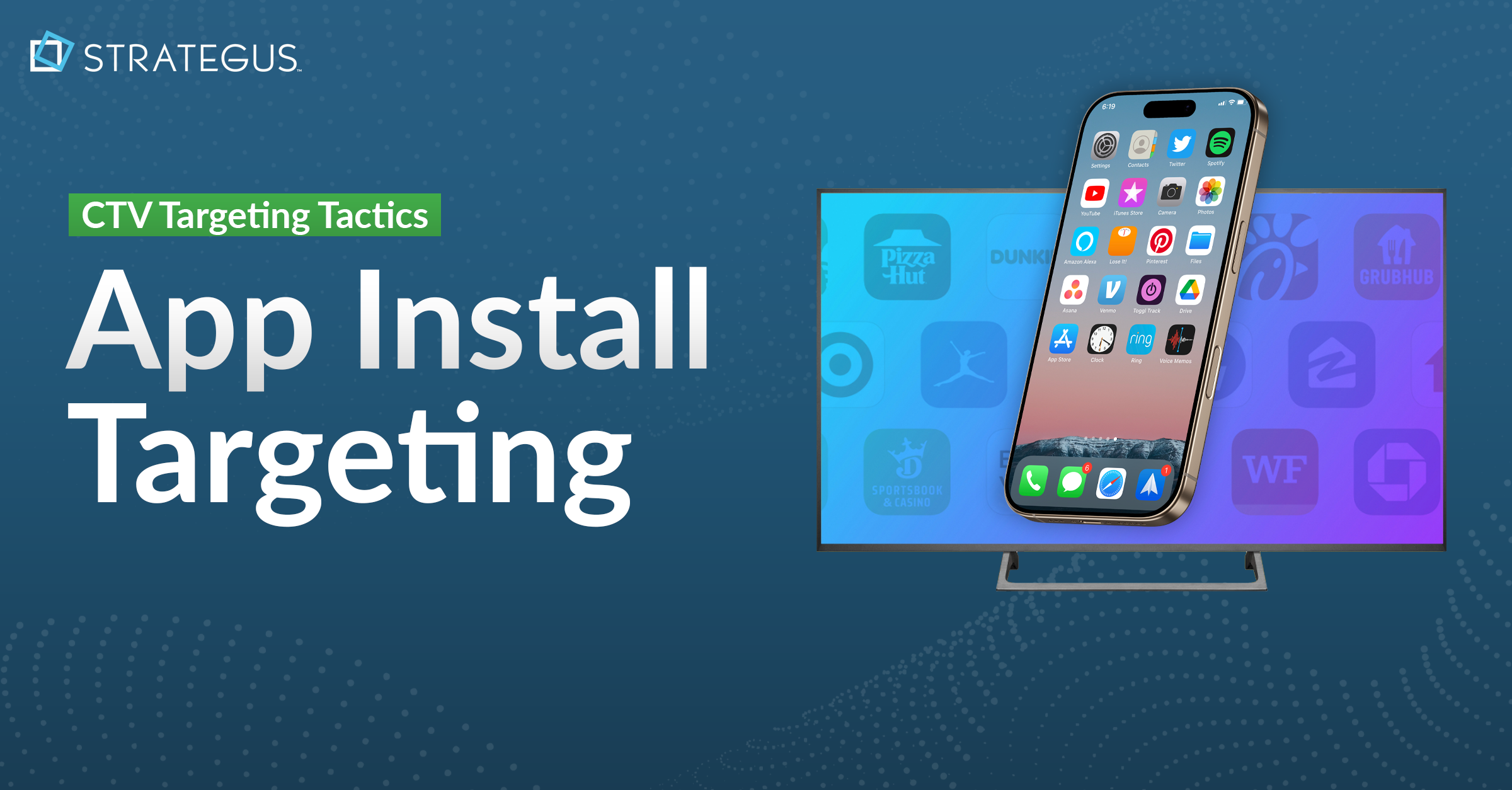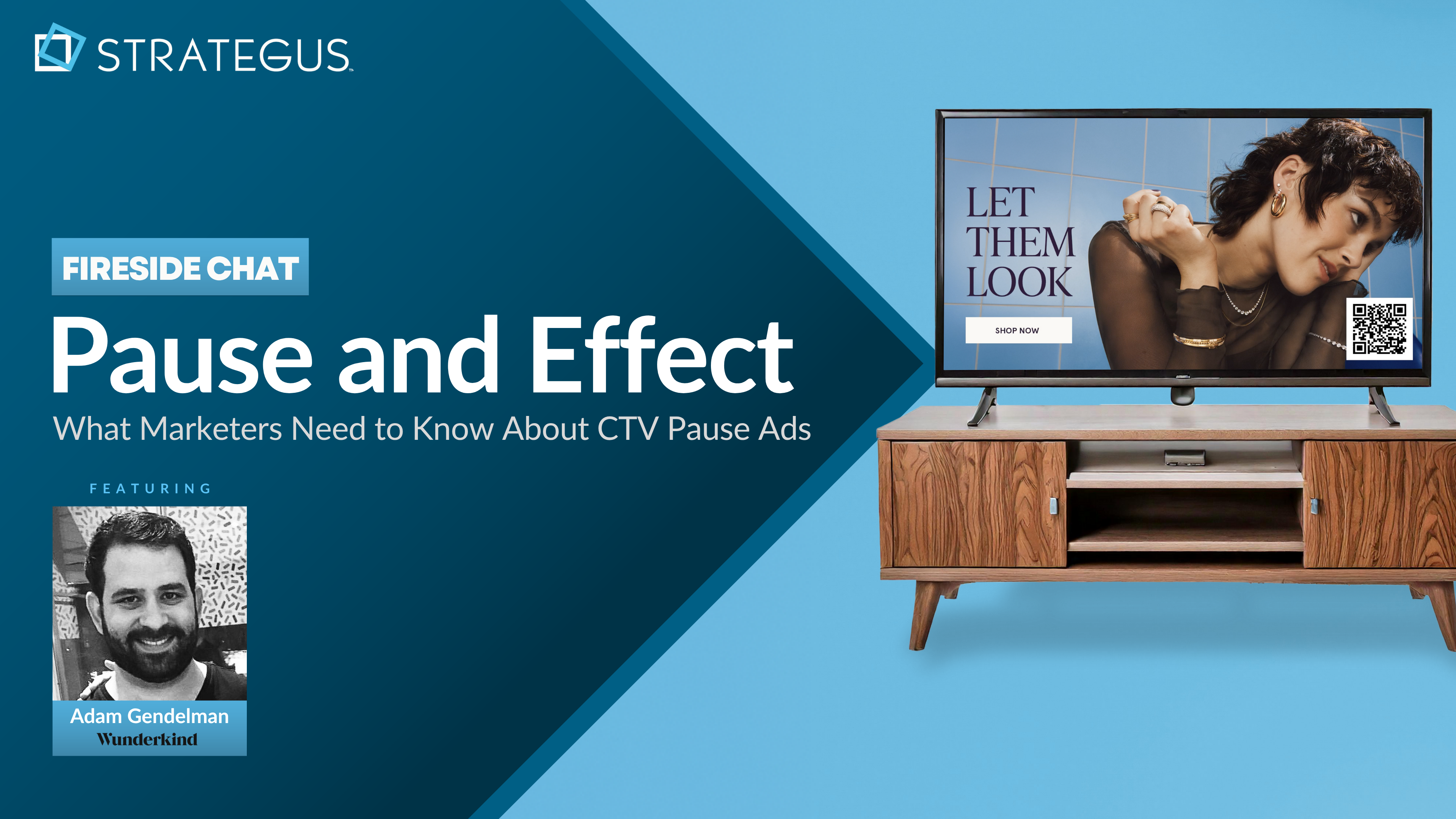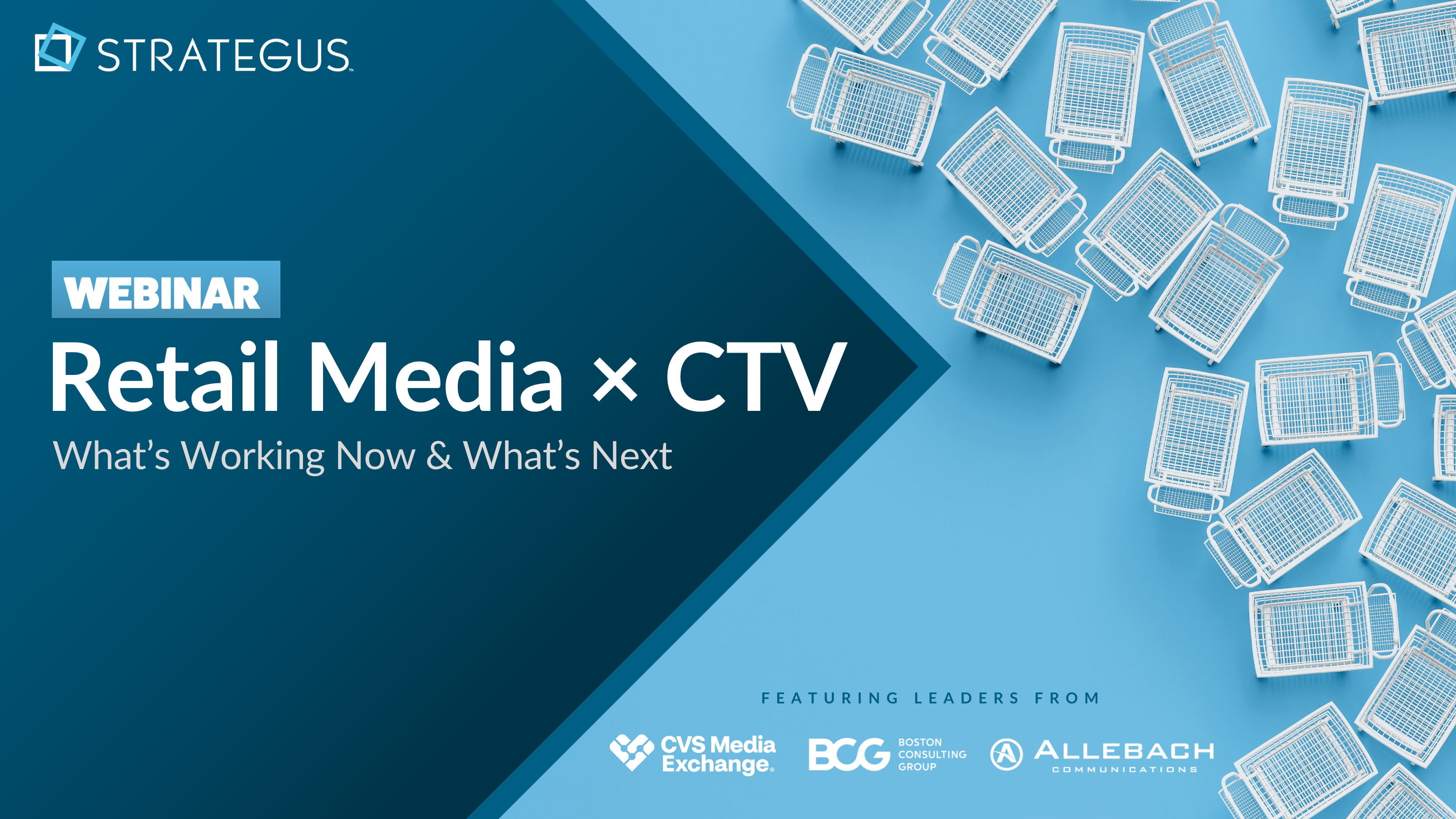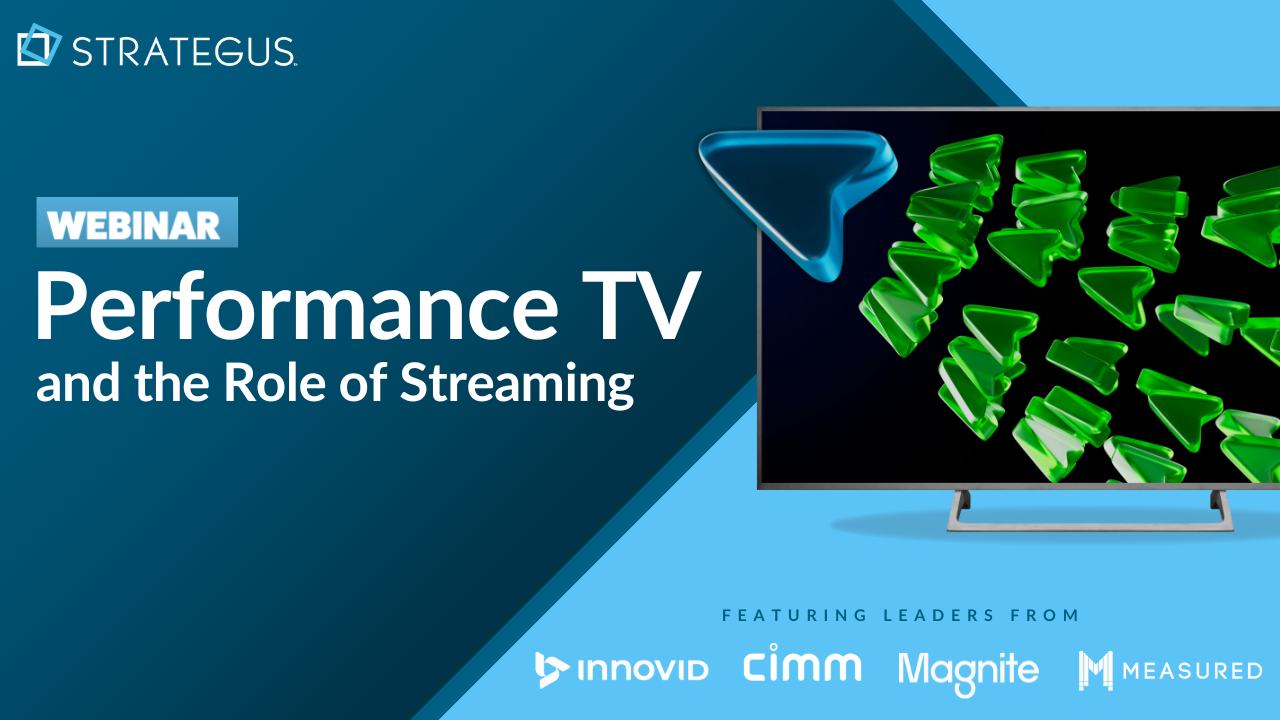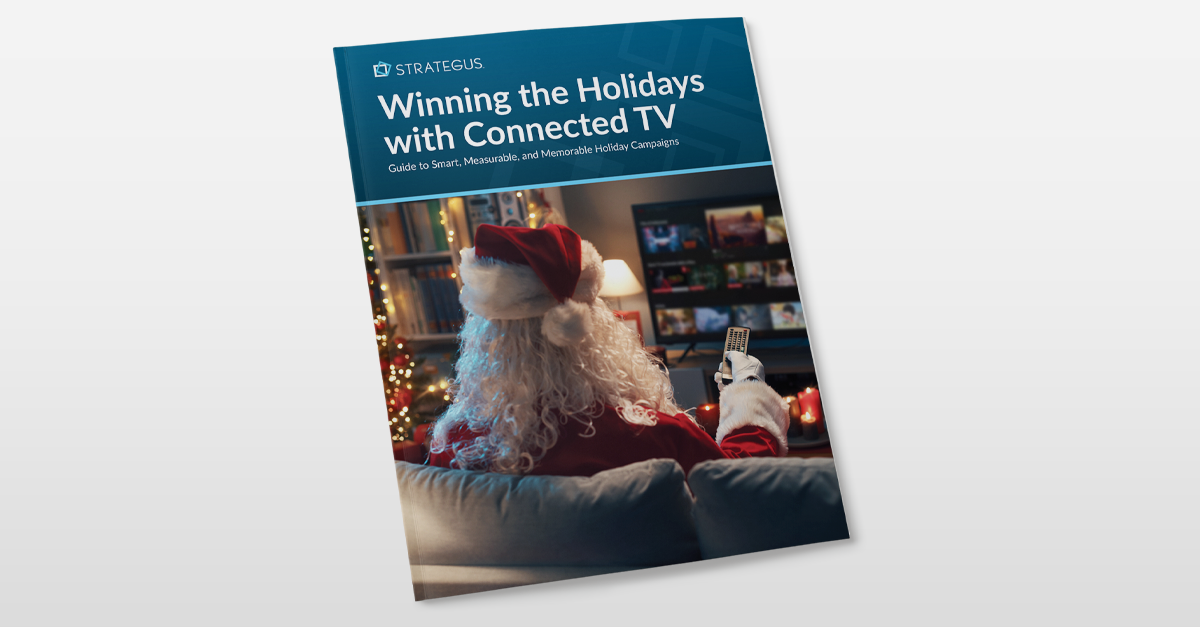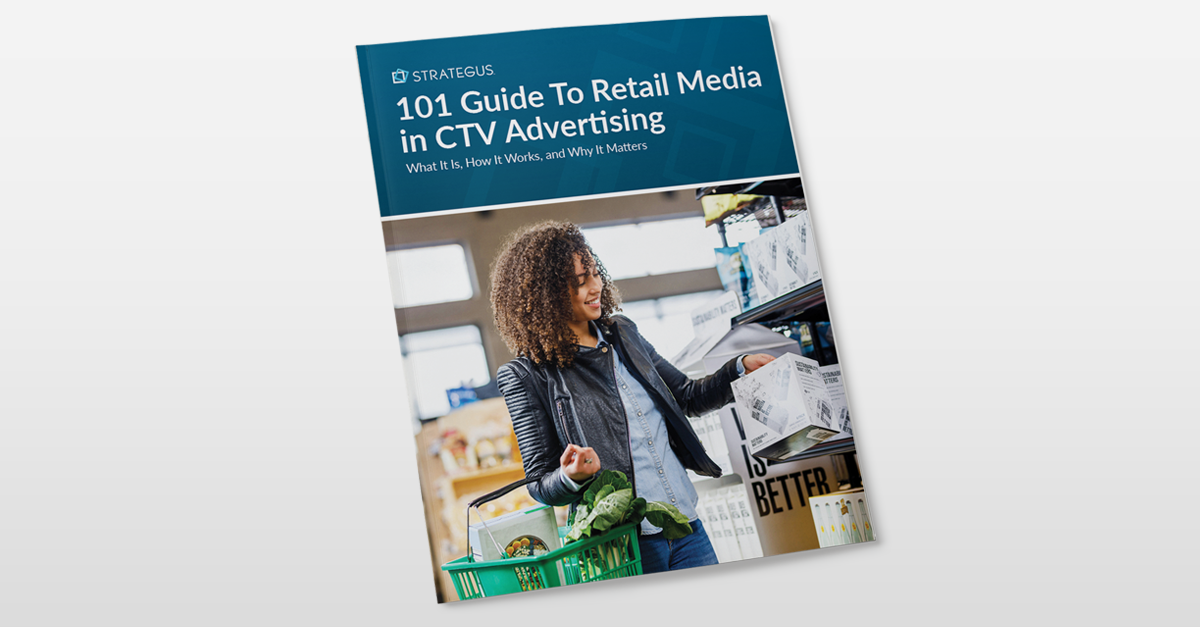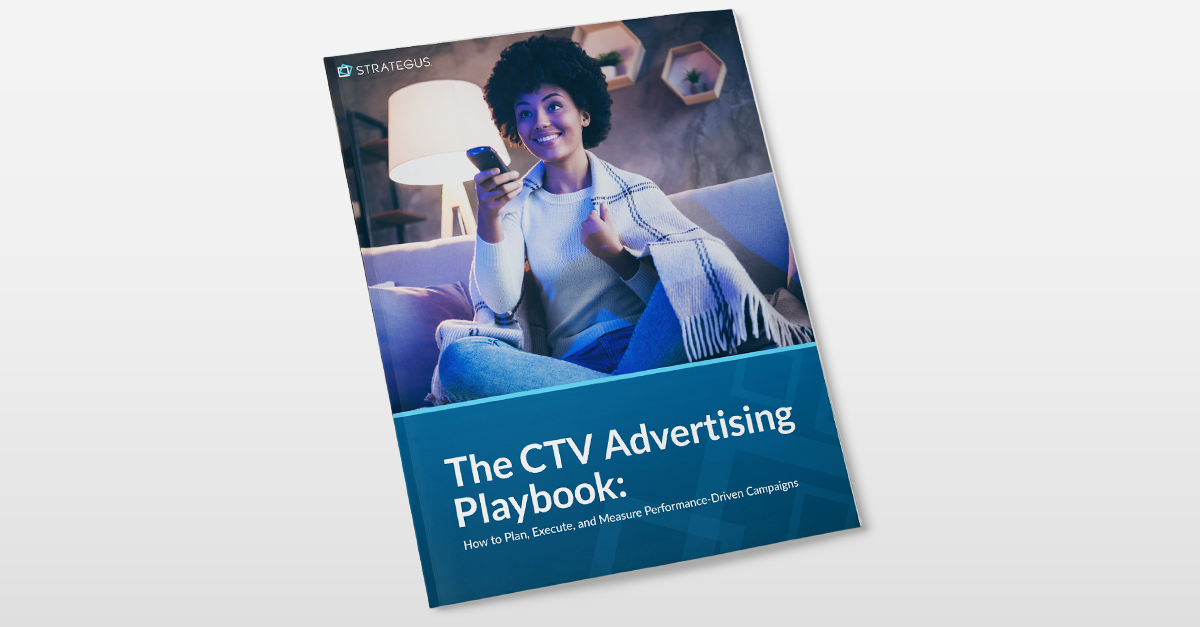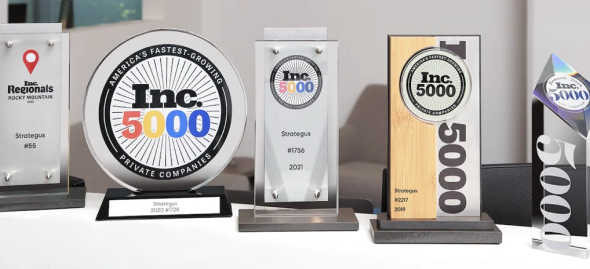- Home
- Strategus Blog
- How to Create a Programmatic Advertising Strategy: Beginner's Guide
How to Create a Programmatic Advertising Strategy: Beginner's Guide
14 minutes read
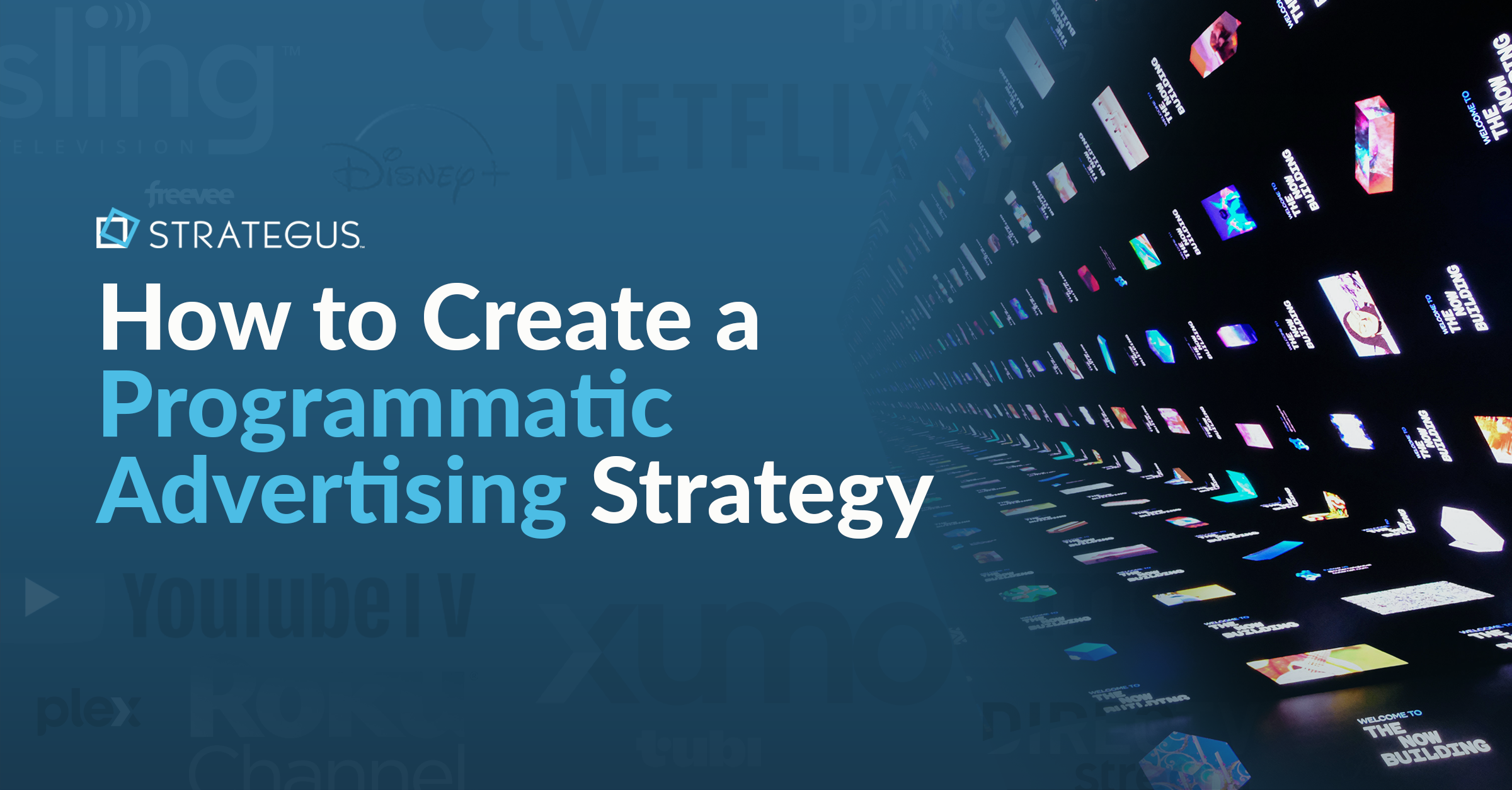
Your competitors are buying the exact same ad inventory you are, using the same DSPs, targeting the same audiences. Yet somehow their campaigns perform twice as well. Frustrating, isn't it?
The uncomfortable truth about programmatic advertising is that having access to sophisticated technology means nothing if you're using it like everyone else. The platforms want you to believe success comes from tweaking bid multipliers and adding more targeting layers. But the brands crushing it in programmatic have figured out something different; they're not playing the optimization game harder, they're playing it smarter.
What separates programmatic winners from the also-rans isn't insider knowledge. It's having a strategy that treats automation as a starting point, not the finish line. While others let algorithms do all the thinking, smart advertisers use programmatic tools to add onto human expertise, not replace it.
This article talks about how to build a programmatic strategy that actually moves the needle on your business goals. You'll learn to spot the difference between busy work and breakthrough tactics, understand which metrics matter and which ones just make pretty dashboards.
Key Takeaways
- Programmatic advertising automates real-time buying of digital ad space across web, apps, and streaming, matching ads to audiences via data and algorithms.
- Key buying models include Real-Time Bidding open auctions, invite-only Private Marketplaces for premium inventory, and negotiated Programmatic Direct with guaranteed placements.
- To launch, define SMART goals, choose a suitable DSP, set targeting, budget, placements, build creatives, then monitor performance and optimize continuously.
- Benefits include increased efficiency, improved targeting, greater transparency, and enhanced personalization through data, delivering better reach, relevance, and return on ad spend.
- Simplify programmatic with a fully managed, performance-focused approach covering strategy, execution, optimization, and transparent reporting. Speak to a Strategus expert today to streamline campaigns.
What is Programmatic Advertising?
Programmatic advertising is the automated buying and selling of digital ad space in real-time using data-driven software.
This technology allows advertisers to purchase ad inventory across a wide range of digital platforms, including websites, mobile apps, and streaming services, all through a single, centralized system.
Rather than manually negotiating with individual publishers or ad networks through non-programmatic advertising, programmatic advertising uses algorithms and real-time bidding to automatically match advertisers with available ad space based on a variety of targeting criteria, such as demographics, interests, and behavioral data.
Types of Programmatic Advertising
Programmatic advertising comes in several distinct flavors, and knowing which one fits your goals can mean the difference between wasted budget and breakthrough performance.
1. Real-Time Bidding (RTB)
Real-Time Bidding (RTB) is an open auction where ad space is bought and sold on a per-impression basis. In this type of programmatic advertising, advertisers compete in real-time for available ad inventory across multiple publishers and platforms.
When a user visits a website or app, an ad request is sent to an ad exchange, which then starts an auction.
Advertisers use demand-side platforms (DSPs) to automatically bid on the ad space based on predefined targeting criteria and budget constraints. The highest bidder wins the auction, and their ad is served to the user instantly.
RTB offers advertisers the ability to reach a wide audience across various digital channels while optimizing their ad spend based on real-time data and performance metrics.
2. Private Marketplace (PMP)
Private Marketplace (PMP) deals are invite-only auctions for premium ad inventory. In contrast to the open nature of RTB, PMPs allow publishers to maintain greater control over the advertisers who can access their ad space and at what price.
Advertisers who are invited to participate in a PMP can benefit from access to high-quality, brand-safe inventory that may not be available through open auctions.
This can be particularly valuable for brands looking to protect their reputation and practically guarantee that their ads appear in reputable, relevant contexts.
PMPs often involve direct relationships between publishers and advertisers, which can lead to more transparent and efficient ad buys compared to the broader programmatic ecosystem.
3. Programmatic Direct
Programmatic Direct refers to automated ad buys between publishers and advertisers that occur outside of the auction-based model.
In this type of programmatic advertising, advertisers and publishers negotiate the terms of the ad buy directly, including the price, placement, and targeting criteria. Once the terms are agreed upon, the ad buy is executed programmatically through a platform that automates the delivery and tracking of the ads.
This approach combines the efficiency and data-driven benefits of programmatic advertising with the direct relationships and guaranteed ad placements of traditional media buying.
Programmatic Direct can be an attractive option for advertisers who want to secure premium ad inventory and maintain greater control over where their ads appear while still making the most of the benefits of automation and real-time optimization.
How to Get Started with Programmatic Advertising
Now that you understand the key components of the programmatic advertising ecosystem, here are the practical steps you can take to launch your first programmatic campaign.
1. Figure Out What Results You’re Looking For
Before you begin setting up your campaign, take some time to clearly define your advertising goals. Are you looking to increase brand awareness, generate leads, or drive sales?
Having a clear image of what you want to achieve will guide your decisions throughout the campaign setup process.
Consider setting specific, measurable, achievable, relevant, and time-bound (SMART) goals to hyper focus your programmatic advertising efforts in the right direction. For example, "Increase website traffic by 25% over the next quarter" or "Generate 100 new leads per month through programmatic advertising."
2. Choose the Right Platform
With your goals in mind, research and select a demand-side platform (DSP) that aligns with your needs and budget. Consider factors such as the types of ad formats supported, targeting capabilities, and reporting features when evaluating potential platforms.
Some DSPs specialize in specific channels, such as mobile or connected TV (CTV), while others offer a more rounded suite of services.
Programmatic TV advertising has become increasingly popular as viewers move towards streaming content, so if your target audience is likely to engage with CTV, look for a DSP with expertise in this area.
Before you sign a contract with a vendor, make the most of free trials or demos offered by DSPs to get a feel for the platform's user interface and capabilities before committing to a particular provider.
3. Set Up Your Campaign
Once you've selected a DSP, it's time to set up your programmatic advertising campaign. Start by defining your target audience using the platform's targeting options.
You can create audience segments based on demographics, interests, behaviors, and other criteria to help your ads reach the most relevant users.
Next, determine your campaign budget and ad placements. Consider factors such as your overall marketing budget, the cost-per-thousand-impressions (CPM) for your target audience, and the ad formats you want to use. Many DSPs offer tools to help you estimate the reach and frequency of your ads based on your budget and targeting selections.
Finally, create compelling ad creatives that align with your campaign goals and target audience. Use eye-catching visuals, clear messaging, and strong calls-to-action (CTAs) to encourage users to engage with your ads. Be sure to follow best practices for each ad format, such as using high-quality images and videos, and keeping text concise and easy to read.
4. Monitor and Optimize
Once your programmatic advertising campaign is up and running, it's important to monitor its performance closely using the real-time data and analytics provided by your DSP. Keep an eye on key metrics such as impressions, clicks, click-through rate (CTR), and conversions to gauge the effectiveness of your ads.
Use these insights to make data-driven adjustments to your campaign settings, targeting criteria, and ad creatives to improve results and maximize your return on investment (ROI).
For example, if you notice that certain ad placements or audience segments are performing particularly well, consider allocating more of your budget to those areas. Regularly review and refine your programmatic advertising strategy based on campaign performance data to make sure you're continuously improving and achieving your goals.
5. Work with a CTV Managed Service Provider like Strategus
Getting started with programmatic advertising can be overwhelming, especially when using self-serve platforms. These tools often require detailed technical knowledge, constant monitoring, and a dedicated team to manage campaigns effectively.
Without the right expertise, businesses risk wasted ad spend, inefficient targeting, and suboptimal results.
A CTV Managed Service Provider like Strategus offers a better solution. With Strategus, you gain access to a team of programmatic advertising experts who manage every aspect of your campaigns.
From advanced audience targeting and creative optimization to real-time adjustments and performance tracking, Strategus handles the heavy lifting, allowing you to focus on your core business goals.
Strategus also ensures access to premium CTV inventory, ensuring your ads appear in high-quality, professionally produced content. Our transparent real-time reporting dashboard provides actionable insights without requiring users to navigate complex analytics tools.
By partnering with Strategus, businesses can avoid the challenges of self-serve platforms while enjoying personalized service, data-driven optimization, and measurable results.
Ready to make programmatic advertising easier? Speak to a Strategus expert today for a fully managed, hands-on approach that ensures your campaigns perform at their best.
Benefits of Programmatic Advertising
Programmatic advertising offers a range of benefits that make it an attractive option for businesses looking to optimize their digital advertising efforts. Here’s why you should opt programmatic advertising:
1. Increased Efficiency
One of the most significant benefits of programmatic advertising is its ability to automate the ad buying process.
With advanced algorithms and real-time bidding, programmatic platforms can quickly and efficiently match advertisers with available ad inventory across a wide range of digital channels.
This automation saves you time and resources that would otherwise be spent on manual negotiations and ad placements. With programmatic advertising, you can focus on developing effective ad creative and optimizing your campaigns based on data-driven insights.
2. Improved Targeting
Programmatic advertising allows you to reach specific audiences with highly relevant ads by utilizing vast amounts of data. This data can include demographics, interests, behaviors, and even real-time location information.
By using this data, programmatic platforms can help you deliver your ads to the right people at the right time, increasing the likelihood of engagement and conversion.
Advanced targeting capabilities guarantees that your ad spend is allocated efficiently, reaching users who are most likely to be interested in your products or services.
3. Greater Transparency
Programmatic advertising provides a high level of transparency into your ad placements, performance, and costs. With detailed reporting and analytics, you can gain valuable insights into where your ads are appearing, who is seeing them, and how they are performing.
This transparency allows you to make data-driven decisions about your ad strategy, optimizing your campaigns for better results and ROI. You can easily identify which channels, ad formats, and targeting criteria are driving the best outcomes and adjust your approach accordingly.
4. Enhanced Personalization
Programmatic advertising enables you to deliver highly personalized ad experiences to your target audience.
By analyzing user behavior, preferences, and past interactions with your brand, programmatic platforms can help you create tailored ad content that resonates with individual users.
How Does Programmatic Advertising Work?
Here’s a step-by-step breakdown of how programmatic advertising works:
- Choose a DSP: To get started with programmatic advertising, you’ll first need to select a demand-side platform (DSP) that fits your goals and budget. This platform is where you’ll define your audience, set your spend, and choose ad formats.
- Set Campaign Parameters: Inside the DSP, configure your campaign settings by specifying the target audience, location, device type, bidding strategy, and creative assets. This ensures your ads reach the right people at the right time.
- Inventory Becomes Available: On the supply side, publishers make ad space available through supply-side platforms (SSPs). When someone visits a website or app, the SSP sends a bid request to an ad exchange.
- Real-Time Bidding Happens: Connected DSPs receive the bid request and evaluate the opportunity based on your campaign rules. Each DSP submits a bid in real time, which is called real-time bidding (RTB).
- Winning Ad Is Served: The highest bidder wins the auction, and their ad is instantly displayed to the user. This entire transaction happens in milliseconds.
- Track Ad Performance: Once the ad runs, your DSP collects performance data like impressions, clicks, views, and conversions. This helps you understand what’s working and what needs improvement.
- Optimize Your Campaigns: Using real-time feedback, you can continuously refine your targeting, creative, and bids to maximize return on ad spend (ROAS).
- Use Advanced Targeting Techniques: As you progress, you’ll encounter targeting strategies like:
- First-party data: Data you collect directly (e.g., site visits, past purchases)
- Third-party data: Data from external providers that expand your reach
- Contextual targeting: Placing ads on pages that match your audience’s interests based on content
Programmatic Advertising Best Practices
Here’s how you can maximize your programmatic ad campaign performance and ROI.
1. Prioritize Ad Quality
Your programmatic ads should be visually appealing, relevant to your target audience, and non-intrusive. High-quality ad creatives capture users' attention and encourage engagement, leading to better campaign results. You need to make sure your ads are well-designed, with clear messaging and compelling calls-to-action.
Avoid using overly flashy or disruptive ad formats that may annoy users and negatively impact their browsing experience. Instead, focus on creating ads that seamlessly blend with the surrounding content while still standing out enough to drive clicks and conversions.
2. Use First-Party Data
First-party data, or information you collect directly from your customers, is a valuable asset in programmatic advertising. Use your website analytics, CRM data, and other customer insights to create targeted audience segments for your campaigns.
By using first-party data to your advantage, you can deliver highly personalized ad experiences that hit the right mark with your target audience. This approach not only improves ad relevance but also helps you build stronger relationships with your customers by demonstrating a deep understanding of their needs and preferences.
3. Implement Frequency Capping
Frequency capping is a programmatic advertising technique that limits the number of times a user sees your ad within a given timeframe. Implementing frequency caps helps prevent ad fatigue and maintains a positive user experience.
Overexposing users to the same ad can lead to diminishing returns and even negative sentiment towards your brand. By setting appropriate frequency caps, you’re keeping your ads fresh and effective without overwhelming your target audience.
Experiment with different frequency cap settings to find the optimal balance for your campaigns. Monitor your campaign performance data to identify any signs of ad fatigue, such as declining click-through rates or increased ad blocking, and adjust your frequency caps accordingly.
4. Embrace Omnichannel Strategies
An omnichannel programmatic strategy helps you reach your audience across devices and platforms like desktop, mobile, social, and connected TV. Managing campaigns from a single platform allows you to optimize across channels in real time.
Each channel requires a tailored approach. For example, mobile ads should suit short attention spans, while connected TV ads should focus on immersive storytelling. By aligning your creative and targeting with each environment, you can boost engagement and performance.
Is Programmatic Advertising Right for Your Business?
Programmatic advertising is right for you if you want to scale smarter, reach the right audience, and track every impression, click, and conversion. It brings precision and efficiency that traditional ad buying can’t match.
However, success with programmatic depends on more than just the right tech. It also requires data, strategy, ongoing optimization, and a deep understanding of how platforms like connected TV fit into your media mix.
If you’re not ready to manage all that in-house, partnering with the right team can help you get the full list of potential benefits of programmatic without the learning curve.
Closing Thoughts — Simplify Programmatic With Strategus
Strategus offers a fully managed programmatic solution built for performance and ease. Whether you're launching your first campaign or scaling across channels, Strategus handles:
- Strategy and targeting
- Cross-platform execution (including CTV)
- Real-time optimization
- Transparent reporting
Our team makes complex programmatic campaigns simple, fast, and effective.
Speak to a Strategus expert today to streamline your ad strategy and achieve better results, without doing it all yourself.
Frequently Asked Questions
1. Can I Do Programmatic Advertising Through an Ad Server?
No, ad servers and DSPs serve different roles. An ad server helps deliver and track ads you’ve already bought, while a DSP actually buys ad space programmatically. To run programmatic campaigns, you need a DSP. You can then use your ad server to manage creative and measure delivery.
2. How are ads bought and sold when using programmatic advertising?
Ads are bought and sold through automated auctions. Publishers list available ad slots on supply-side platforms (SSPs). When a user visits a site, the SSP sends bid requests to demand-side platforms (DSPs). Advertisers bid in real time, and the highest bidder wins the ad slot and serves the creative.
3. How Do Programmatic Ads Work?
Programmatic ads work through real-time auctions. When someone visits a website or app, the system checks who they are and sends bid requests to advertisers. Advertisers with matching targeting rules place bids instantly. The winning ad is shown to the user, and performance data is collected for future optimization.
4. How Does Programmatic Advertising Work?
Programmatic advertising uses software to automate buying and placing digital ads. Advertisers choose their target audience, budget, and creative. When a user matches the criteria, the system bids for ad space in real time. The winning ad is shown instantly, and the system tracks performance for ongoing improvements.
5. How Does Programmatic TV Advertising Work?
Programmatic TV advertising delivers ads on streaming platforms through automated buying. When a viewer streams content, the system checks if they match advertiser targeting. If yes, the ad request triggers a real-time auction. The winning ad plays during the content stream, often on connected TVs like Roku or Fire TV.
6. How to Buy Programmatic Ads?
Start by choosing a demand-side platform (DSP) that fits your goals and budget. Set your target audience, bidding strategy, creative, and budget inside the platform. Once the campaign goes live, the DSP automatically bids on available ad space and delivers your ads to relevant users in real time.
7. How to Get Started With Programmatic Advertising?
Begin by defining your campaign goals, such as awareness or conversions. Choose a DSP with strong targeting and reporting tools. Set up your audience segments, ad creatives, and budget. Once live, monitor results using real-time analytics. If needed, work with a managed service provider like Strategus to simplify the process.
8. How to Measure Programmatic Advertising?
Use metrics like impressions, click-through rate (CTR), conversion rate, and return on ad spend (ROAS). A good DSP will give you real-time reports. Track how well your targeting and creatives perform. You can also use attribution tools to see how ads influence sales, leads, or other business goals.
9. How to Optimize Programmatic Campaigns?
Review your performance data regularly. Shift budget toward high-performing audience segments, placements, or creatives. Test different bidding strategies and ad formats. Use frequency capping to prevent overexposure. If you're running CTV ads, monitor completion rates and conversions. Keep adjusting your settings to improve efficiency and results.
10. How to Implement Programmatic Advertising for Small Businesses?
Small businesses can use budget-friendly DSPs or work with managed partners. Focus on narrow targeting, such as location, interests, or recent behaviors. Start with small test campaigns. Use clear creative and strong CTAs. Monitor performance and adjust quickly. Programmatic lets small brands compete by using smart data, not big budgets.
Strategus is a managed services connected TV(CTV) advertising agency with over 60,000+ campaigns delivered. Find out how our experts can extend your team and drive the result that matter most.
Talk to an Expert
Seeking a Custom CTV Strategy That Delivers?
What to read next
App Event Tracking: Tie Mobile App Activity to CTV Campaigns
Let’s say you’re running a CTV campaign for a personal finance app.
5 minutes read

Stop Guessing Who Your Audience Is — Let Their Apps Tell You
Connected TV (CTV) targeting often falls in one of two camps.
8 minutes read
See Who Bought After Your Ad + How Much They Spent
You can’t improve what you can’t measure. And for years, that’s been a major problem with TV advertising.
4 minutes read
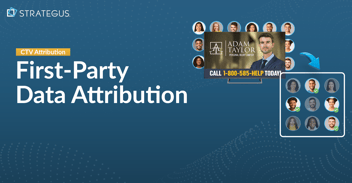
First-Party Attribution: Match Ads to Sales With CRM Data
The value of first-party data continues to grow.
7 minutes read

